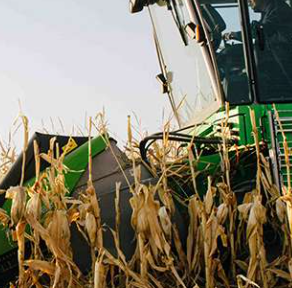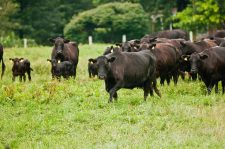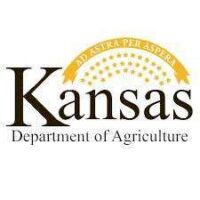Lovina’s Amish Kitchen
Lovina Eitcher,
Old Order Amish
Cook, Wife &
Mother of Eight
Christmas 2025 will be here in a few days already! This year our family will gather on Christmas Day. What a joy it is to me when we can be with our loved ones. Let us remember the reason for the season. Our Savior Jesus Christ was born.
Today, December 22nd is my husband Joe’s 57th birthday. He had to work today and again tomorrow then he’ll be off the rest of the week. I made Christmas cookies and decorated them for him to treat his co-workers. Daughter Elizabeth told me when three-year-old Andrea found Timothy’s (TJ) candles for his birthday cake she said, “Mom, these are the blessings that TJ will blow out.” So sweet!
We attended the Christmas program at the school on Thursday night. Eight of our fifteen grandchildren were in the program. Their faces light up when they see us there. It doesn’t seem that long ago when it was our children in the program and now it’s their children. Unbelievable!
Since my last letter we have butchered pork. We butchered two pigs. One was for us and one for Daniel Ray and Verena. Some of our married children and Daniel Ray’s parents assisted us with the pork butchering. The tenderloin, pork loin, pork steaks, ham and bacon is cut out and the meat is cut up into smaller pieces for the grinder to grind into sausage. The bones are trimmed then put in the hot water in the big black kettle outside over the open fire to cook off the meat. The lard is cut into small pieces and rendered in another big black kettle outside. The juice and the meat from the bones is used to make Pon Hoss. Some of the sausage is canned but the majority is bagged for the freezer.
On Friday Joe and I attended the wedding of our neighbor’s son Phillip and Sara Sue. It was a cold, windy, snowy day! The wedding services were held under a big tent. They had a lot of heaters, but that wind seemed to find its way into the tent. We all had our coats on during the service. Needless to say, we were all glad when it was time to go inside the warm pole barn where the tables were set to eat a delicious meal. The coffee tasted extra good! We wish the couple a happy married life!
Last Tuesday evening we were invited to our neighbors David and Barbara for a Christmas dinner. They invited the older couples, widows and widowers from the three surrounding church districts. We were served a very good meal. They had some younger couples bring snacks and sing Christmas songs for us after supper. So many goodies! We were sent home with a plate of goodies. It was an enjoyable night! On Sunday our church had our annual Christmas potluck dinner after church services. Christmas songs were sung afterwards.
Four-month-old Brooklyn (Daniel and Lovina) still isn’t sure about the German songs we sing at church. She keeps making a pout face like she’s going to cry when we sing. So cute!
Kylie (Dustin and Loretta) is taking her first steps. She will be a year old on January 4th. Her older brothers get excited to see her do something new. Kylie loves to try to wake up her brothers when they are taking a nap if she gets a chance.
The snow is almost all gone except for the piles on the sides of the drive. For me I’m fine with not having more but we all know that won’t be true. We will accept whatever God sends to us.
This week I’ll share the recipe my daughters and I like to use to make cut out cookies. It’s Sour Cream Cutout cookies. The dough is easy to handle. I mixed the dough a few days before and refrigerated it until I found time to bake and decorate them.
From our house to yours….we wish you a blessed Christmas and time well spent with your loved ones. May God bless your families and bring you much love in the new year 2026! Our hearts go out to the ones that lost loved ones and are spending the holidays without their dear ones. May God give you peace and comfort! God’s blessings!
SOUR CREAM CUTOUT COOKIES
2 cups sugar
3 eggs
1/2 cup butter( room temperature )
1/2 cup butter flavored shortening
1 cup sour cream
2 teaspoons baking powder
2 teaspoons baking soda
1/4 teaspoon salt
2 teaspoons vanilla
5 to 6 cups flour
Combine sugar, butter, and shortening, then add eggs and sour cream and mix well.
Add baking powder, baking soda, salt, and vanilla to the creamed mixture. Gradually add flour. Refrigerate for several hours or overnight. Roll out on a floured board and use your desired cutout shapes. Bake on a greased cookie sheet at 350 degrees for 8 to 10 minutes or until golden brown on the edges. Use your favorite frosting to decorate the cookies.
Lovina’s Amish Kitchen is written by Lovina Eicher, Old Order Amish writer, cook, wife, and mother of eight. Her three cookbooks, The Cherished Table, The Essential Amish Cookbook, and Amish Family Recipes, are available wherever books are sold. Readers can write to Eicher at Lovina’s Amish Kitchen, PO Box 234, Sturgis, MI 49091 (please include a self-addressed stamped envelope for a reply); or email [email protected] and your message will be passed on to her to read. She does not personally respond to emails.






